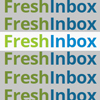By Savicom News
Incorporating Color Psychology in Email Design
Color psychology is an integral part of creative design. Just as a person’s body language sends non-verbal cues during face-to-face interactions, the colors of an email send subliminal messages to the reader. Getting this facet of your emails right will ensure you are not sending mixed messages.
Color Psychology- What is it?
-
Color psychology is using colors in a graphical element to elicit a desired emotional response.
-
While responses to a particular color can be generalized, an individual’s response is based upon:
-
Gender: Studies show that men and women perceive and respond to colors and intensities differently
-
Culture: Colors can have cultural connotations. For instance, in China, red is a color of luck and good fortune, while in the United States, red is a color of excitement and love. Being aware of these cultural nuances and how your target audience might perceive them is important in cross-cultural email marketing. The color emotions discussed in this guide are for the United States (Western) culture.
-
Background: Past associations with a color can affect how someone might respond to a color on an individual basis.
-
Gender: Studies show that men and women perceive and respond to colors and intensities differently
-
The right color reinforces your email message
-
Sets tone of email
-
Sets tone of email
Why Use It?
-
Up to 90% of first impression judgments based on color alone (“Impact of Color in Marketing” study)
-
Selecting the right color reinforces your brand message
-
Maintaining consistency is important in branding
-
Maintaining consistency is important in branding
-
The right color reinforces your email message
-
Sets tone of email
-
Sets tone of email
The Color Emotion Guide
-
Red
Energy – This color boosts energy levels and adrenaline, but is also associated with passion and romance
-
Orange
Fun – This is a stimulating color associated with positive feelings, representing warmth and happiness
-
Yellow
Optimism – It is uplifting, happy, cheerful, but can also strain the eye (evoking frustration)
-
Blue
Trust – Also associated with honesty, loyalty and calmness
-
Green
Growth – Can also represent peacefulness and balance
-
White
Neutral – Provides minimal emotional stimulation, so represents sterility, cleanliness
-
Black
Hidden – It can also mean power and control
Gendered Color Preference
Studies performed by KISSmetrics show that men and women prefer different colors and intensities.
What to Consider When Selecting Colors
When selecting colors for an email, it is important to consider these three things:
-
- What is the tone you want to convey?
- What is the response you want to elicit?
- What should visually stand out in the email? (typically the CTA button)
Once you have decided upon these things, you can then select your primary color, background color and accent color (refer to Color Emotion Guide) .
The Isolation Effect
- The Isolation Effect states that people are more likely to notice words or images that contrast with the background, making them stand out.
-
Use contrasting colors to draw attention to the most important part of your email message– generally the CTA button
Complementary Colors
To maximize conversions, picking a contrasting– but complementary-- color for the CTA button is important.

Color Ratio
Jared Christopherson of Yellowhammer suggest using a 60-30-10 ratio when selecting colors for email:
-
60% background color.
-
30% base color
-
10% accent color, typically the boldest color
Test, test, test
As always, test, test, test! Use the split test function to test different CTA button colors, and background colors. This way, you’ll have empirical evidence about what your particular database prefers and can plan future creative design around what colors you know your audience responds to best.




